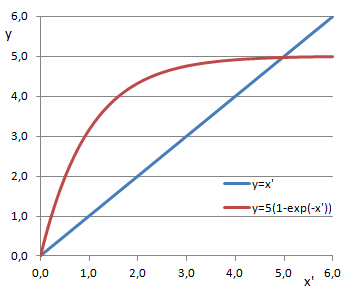Supplement 2.4: Wien's Displacement Law
Wavelength representation
The spectral energy density distribution of the radiation field of a black body is:
The wavelength at the maximum of Planck's radiation curve over the temperature can be calculated from its derivative by equalising it with zero (extrema problem). For a clear overview we set
With the new variable, the radiation law becomes:
By the help of the quotient rule, the derivate will be:
By equating with zero and reducing, a transcendental equation for the extremum can be found:
As with most transcendental equations and in contrast to algebraic equations, it cannot be solved exactly, but only approximately.
One finds:
With , and it follows Wien's displacement law:
Frequency representation
It this case it is not possible either, to deduce the maximum from the maximum of the wavelength representation on the left with the relation . The graphics of the Planck curves in the wavelength and frequency representation show, that their maxima of do not match.
The calculation therefore has to emanate in this case as well from Planck's radiation law in the form of the frequency representation. The process of calculation is comparable with the one shown in the left column. The adequate equations are given below for the sake of completeness.
The spectral energy density of the black body as a function of the frequency is:
The radiation law with the new variable :
Differentation with respect to the frequency:
The transcendent equation for the calculation of the extremum
with the solution .
Wien's displacement law hence becomes:

